| | 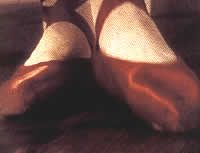
Did Powell ever discuss with you his reasons for reversing the usual colour language of Heaven and Earth?
No, he didn’t. I said to him right before we started work, ‘I suppose Heaven will be in colour and Earth will begin black and white’. He said ‘No, on the contrary. That’s what the public expect and I’m not going to give it to them’. That was his whole attitude, to do something different. Hitch was another cup of tea entirely. He had a great genius for dramatic ideas, and he’d put it all in the script. He’d work on the script more than any other director that ever existed, and the more power he got, the more recognition, the more dissatisfied he would be with the first few scripts and have another writer on it improving it. So that finally, the script that he was satisfied with went on the floor, he was bored shooting the picture. Because it was a fait a complit. It amazed me that he hardly ever looked through the camera. I don’t think I ever saw him look through the camera and he didn’t go to rushes much. He had an editor put it together and show it once or twice to him during the making of the picture. And that was it. He would say to me sometimes, ‘Jack, you have a 35mm?’ ‘Yes’. ‘And you’re cutting through the hand?’ ‘Yes’. He knew so much about what he was getting that he didn’t have to look through the camera." The Red Shoes – were you a fan of ballet when Michael Powell broached the project to you during Black Narcissus?
He asked me what I thought of ballet and I said, ‘Not much, you know’. He said, ‘Have you ever been to ballet?’ I said ‘’Fraid not’. He said ‘Well you’d better start right away. You’d better have tickets to go practically every night’. I said ‘Oh my God’ and I did go practically every night. And, of course, I was hooked immediately. It was a wonderful experience. I had permission to go back stage and look at all the dressing rooms and the way things were lit; funny looking brass lamps hanging down. It always looked a little moth-eaten and one got a lot of character looking at these things. So that was great and it was a great adventure. 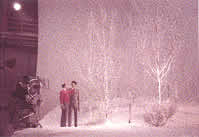
We had certain problems with the ballet dancers. They were a lovely corps de ballet but studios are mostly concrete floors and they weren’t used to them; they usually have a certain amount of softness in their wooden floors on the stage. So they had a lot of sore feet and it was very painful for them. I believe that Moira Shearer hurt herself when she fell from the balcony in the studio onto her head. Did that cause any production problems?
It was fairly safe. When she jumped there was this supposed steam effect that covered the fall and then we cut to the real thing. The funny thing was that the critics – it wasn’t funny, it was sad – was that Rank himself and all his people thought The Red Shoes was a disaster and they wouldn’t allow it to have a premiere. They said it was a complete waste of money and they said to Michael, ‘In the future we’ll choose the subjects’. That’s when Michael left Rank. Was it the subject matter?
I couldn’t believe it, it was so silly, but they thought that the public weren’t ready, that it was a silly story and didn’t make sense; and a lot of the film critics were puzzled that it wouldn’t have a premiere. That was a dead sign that Rank weren’t happy and a lot of them criticised the film. Moira’s death scene was heavily criticised. Looking at it recently, I thought heaven knows what it was about it they could possibly criticise. It was as if she looked ghastly and was entirely covered in blood. She had a little bit of blood. But today they’re just drenched in blood, aren’t they? Anyway, one or two of the critics were sarcastic and talked about things like when the waves break over the stage, which is an entirely fantasising thing. What saved the whole situation was that this man from America had this little bijou cinema in New York, and he persuaded Rank to loan him the film for a little while. So he took it to New York and it ran for two years in his little cinema. With word of mouth it got more and more important, then it toured on a big road show in America. It was a huge success, and then someone high up in the film industry phoned Rank to congratulate him that the film was an enormous success, it would have been funny to watch Rank’s face when he heard that. 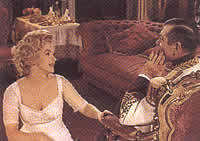
How did you achieve some of the movement with the camera during the ballet sequence? It is very fluid, given the size of the cameras at the time.
That’s easy because we had to shoot the ballet sequence to playback. It had been decided that we’d do the music first and then work to the music. That was a great relief to the camera crew because we didn’t have to have this awful blimp. We just had the camera taken out of the blimp and we were able to have much more manoeuvrability with it than when it was inside the great Technicolor blimp, which was colossal. The corps de ballet were usually rehearsed on another stage, by another ballet man, so that they were ready to come straight on the stage, otherwise we would have lost a lot of time rehearsing the ballet scenes. You experimented a lot with speed.
Michael gave me about a week on my own, testing, which was great. I was given a couple of ballet dancers – on male, one female – to do pirouettes, etc, and I was very pleased with them. I did the tests for the paper dance where they go round and round, increase speed, decrease speed, and when we did the tests I showed them to Michael. He said, ‘They’re great, but I have to tell you that we’ve decided to do the music first because we don't think that the audience are ready for too much ballet in a picture’. They were right, as it happened. So we’ve got a maximum of 18 minutes for the ballet. 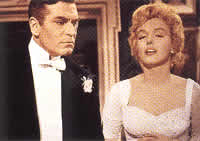
What is your opinion of what we see in today’s cinema?
What seems to have happened is that in the average American film, the Hollywood sparkle, glamour has gone out of it, because it was unrealistic. Most modern stories have got a very realistic atmosphere and obviously it would ruin the atmosphere. Actually, the standard of photography in this country has improved enormously in the last few years. Some of the cameramen in England are actually working in Hollywood on Hollywood films, so they’re doing a great job at the moment. But the tendency is realism, and it’s changed the whole sort of genre of films. So the old-fashioned things of glamour and backlight and sparkle have gone in favour of realism. Tell me bout Sabina Anima, the film you’re trying to get made.
Actually, we’re still hoping to finalise the money side of it. It’s one of life’s major mysteries to me that England has turned out marvellous films recently, and the speculators just won’t invest in British films. All the films we’ve made, Billy Elliott is a very low budget picture, has made a fortune already. They’ve all got lots of money and they’re investing millions and millions, but they won’t invest an odd million or two in a British film where they could make all this profit. The one I want to work on, I want to photograph it, I would rather photograph it than direct it, because it’s an interesting true story. This Russian Jewess comes over, she’s highly disturbed, and Freud gives her over to Jung, Jung cures her over a few months, and in that time they have a big, big love affair. He’s married with two kids but they have this big affair. Then she, the wife, becomes pregnant and tells the girl that that’s the end of the affair. In the meantime she becomes a brilliant psychiatrist herself. She goes back to Russia at the wrong time but she becomes a very big psychiatrist. When the war starts, she is shot by the Nazis as a Jewess. So it’s a powerful story. It’s a budget of £3m, and we were all ready to go but on the money side, suddenly something happened and they dropped out. So that’s when Scorsese stepped in and put me onto someone. 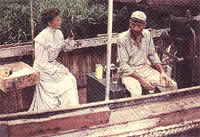
What’s the attraction of the story to you as a cinematographer?
What is fascinating to me is it has great opportunities to show what goes on in this person’s mind with terrible mental problems. That suggests all kinds of strange, weird lighting. Also, Jung had this spiritual guide, which fascinates me because I can’t believe it but all the books talk about his spiritual guide. So the way to portray the spiritual guide is a challenge without being too obvious or too subtle. There are a lot of photographic opportunities and I am dying to do it. But as I say, it is fascinating that these cowards in this investment lark won’t invest a very small amount.
What did this latest Oscar mean to you compared to the one you won for Black Narcissus?
Well it was a great compliment and one that I sincerely appreciated, recognition of my work, for better or worse, and recognition of my long service in the film industry. And that’s better than winning it on a single film. The average person is nominated for an award and they wait and wait for weeks and wonder if they’re going to win it, but this was something that was decided. I thought they were joking when they told me over the phone. I said, ‘You’re kidding. Who is this?’ And then when I realised it was true, I thought it wasn’t a questioning of waiting to see if I’d get it; I’d got it. It was an extraordinary situation. Did this make up for the fact that you didn’t get one for The Red Shoes, which amazes me?
I had a big friend, Lee Garmes. He was a very fine cameraman, and at the time when The Red Shoes was coming out, the American newspapers said one thing is for sure, there will be a lot of awards for visual effects and the photography is certainly going to get the award this year. Everyone expected it because it was obvious. Lee Garmes phoned me when I was in England from America and said, ‘Jack, you’re not going to believe this, but at a meeting of the American Society of Cameraman, they said it was obvious that I was going to win the award. But, because I had won the award the previous year, for Black Narcissus, it was denigrating for American cameramen that an Englishman would capture the award and it would make out that we were so much better’, so they decided not to nominate me. I wasn’t even nominated. I’ll call this one the award for Red Shoes. I’ll scratch out the Achievement Award and put The Red Shoes. 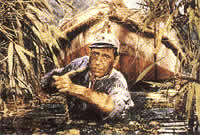
Did you feel bitter at the time?
Looking back on it I wasn’t very upset I suppose. But what happened was that I had dinner with a few cameramen, because I was very friendly with them. That’s why I didn’t complain too much because I didn’t want to be an outsider from my chums in America – but I went to this dinner, there were two or three people around the table, including Lee Garmes, and the subject of Red Shoes came up. One of the cameramen said, ‘Well Jack, you can’t win them all. I guess Technicolor did the dirt on you on that one. The colours were awful, weren’t they?’ I said, ‘Well it got an award for Best Colour Art Direction’. He said ‘But for photography, something went wrong’. And I looked at Lee Garmes and he went a dull red because he knew that I knew what really happened. This cameraman was making out that the colours were all wrong. |